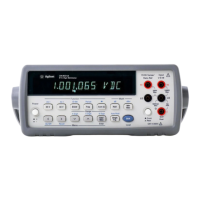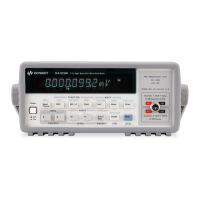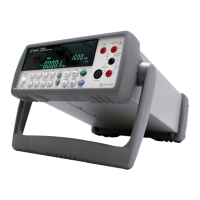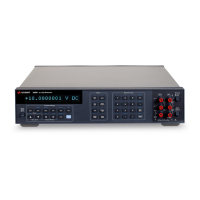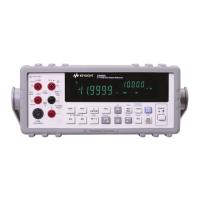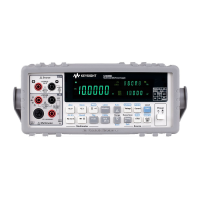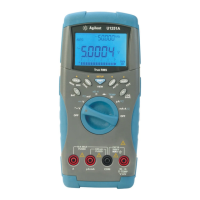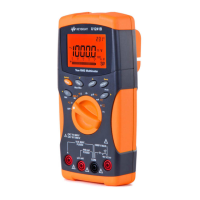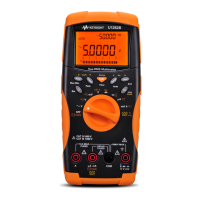54 34410A/11A User’s Guide
2 Features and Functions
• Front Panel Operation: After selecting an applicable measurement function
(DC V, DC I, W 2W, W 4W or TEMP), press until INTEGRATION is
displayed. press or to select NPLC, then press or to
display NPLC on the primary line and a range of choices on the
secondary line. Press or to select the desired NPLC value, and
press . Then step through or exit the configuration menu.
• Remote Interface Operation: The following commands set the integration
time in NPLC:
[SENSe:]VOLTage[:DC]:NPLC {<PLCs>>MIN>MAX>DEF}
[SENSe:]CURRent[:DC]:NPLC {<PLCs>>MIN>MAX>DEF}
[SENSe:]RESistance:NPLC {<PLCs>>MIN>MAX>DEF}
[SENSe:]FRESistance:NPLC {<PLCs>>MIN>MAX>DEF}
[SENSe:]TEMPerature:NPLC {<PLCs>>MIN>MAX>DEF}
The following command (similar queries for current, resistance and
temperature) queries the integration time setting:
[SENSe:]VOLTage[:DC]:NPLC? [{MIN>MAX}]
Refer to the Agilent 34410A/34411A Programmer’s Reference for
complete description and syntax for these commands.
Aperture is the period, measured in seconds, during which the
multimeter’s analog–to–digital (A/D) converter samples the input signal for
a measurement. A longer aperture yields better resolution; a shorter
aperture provides for faster measurements. This selectable feature allows
the user to set a specific measurement period, not based on power line
frequency. Selectable values range from 300 3s to 1 second for the
34410A, and from 100 3s to 1 second for the 34411A.
• To allow for normal mode (line frequency noise) rejection, select the
NPLC option for INTEGRATION, with an integral number of NPLCs. Use the
APERTURE method only if you need precise control over the multimeter’s
integration time, in seconds.
• Front Panel Operation: After selecting an applicable measurement function
(DC V, DC I, W 2W, W 4W or TEMP), press until INTEGRATION is
displayed. Press or as needed to select APERTURE, then press
or to display APERTURE on the primary line and the current aperture
value on the secondary line. Use the navigation keypad to select the
desired aperture value, and press . Then step through or exit the
configuration menu.
